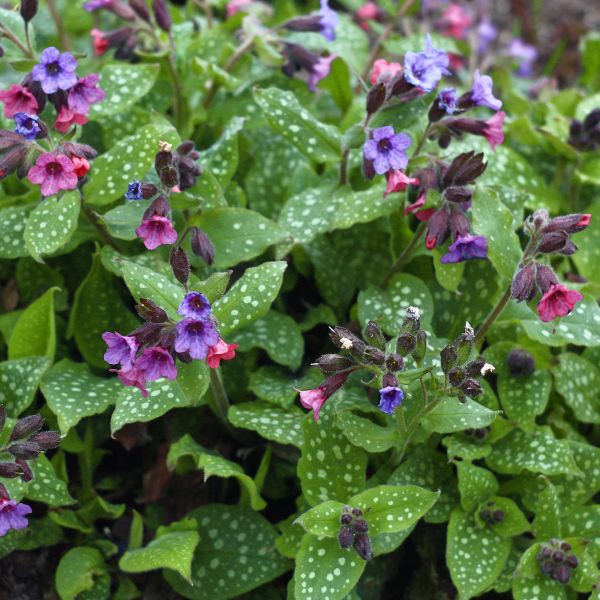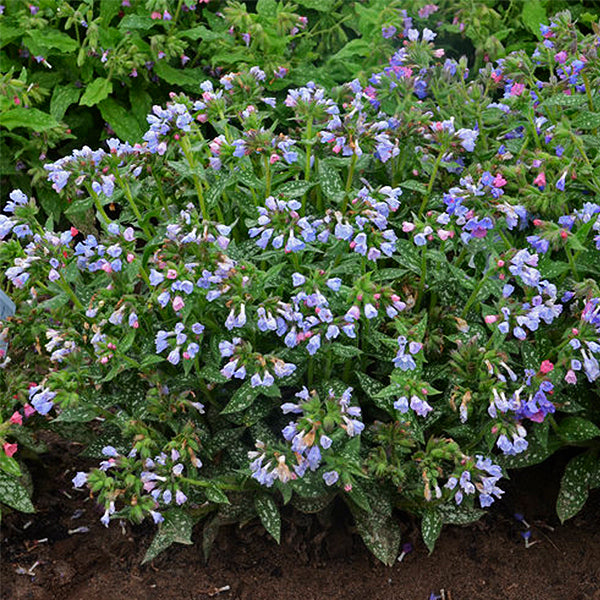How to grow lungwort – for an attractive and low-maintenance ground cover plant ideal for shady spots
This beautiful and versatile perennial can be a solution for those hard-to-fill gaps in the garden
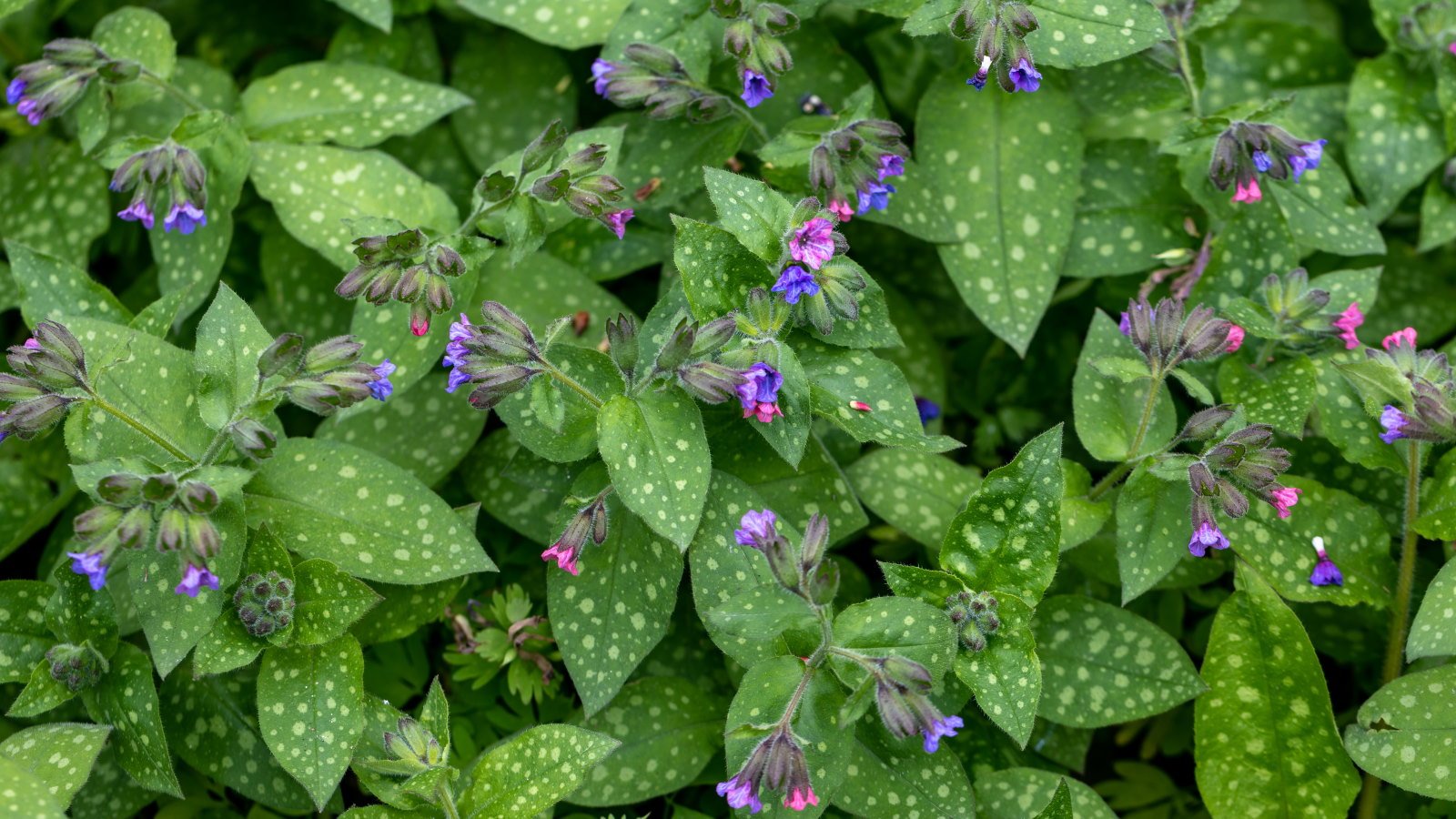

Are you looking for a bright and cheery easy-to-grow perennial to fill a shadier spot in your garden? Then it might be worth learning how to grow lungwort - as they tick those boxes and many more.
Lungwort, commonly known as pulmonaria, is a low-maintenance herbaceous perennial that can bring attractive foliage and colorful blooms in early to mid-spring. The flowers offer valuable food for bees and butterflies early in the season.
Lungwort is one of the best shade plants for filling tricky spots in the backyard, such as under trees and shrubs. Learning how to grow lungwort is not difficult and, once the plant is established, it can be fuss-free and provide a delightful show of blooms year after year.
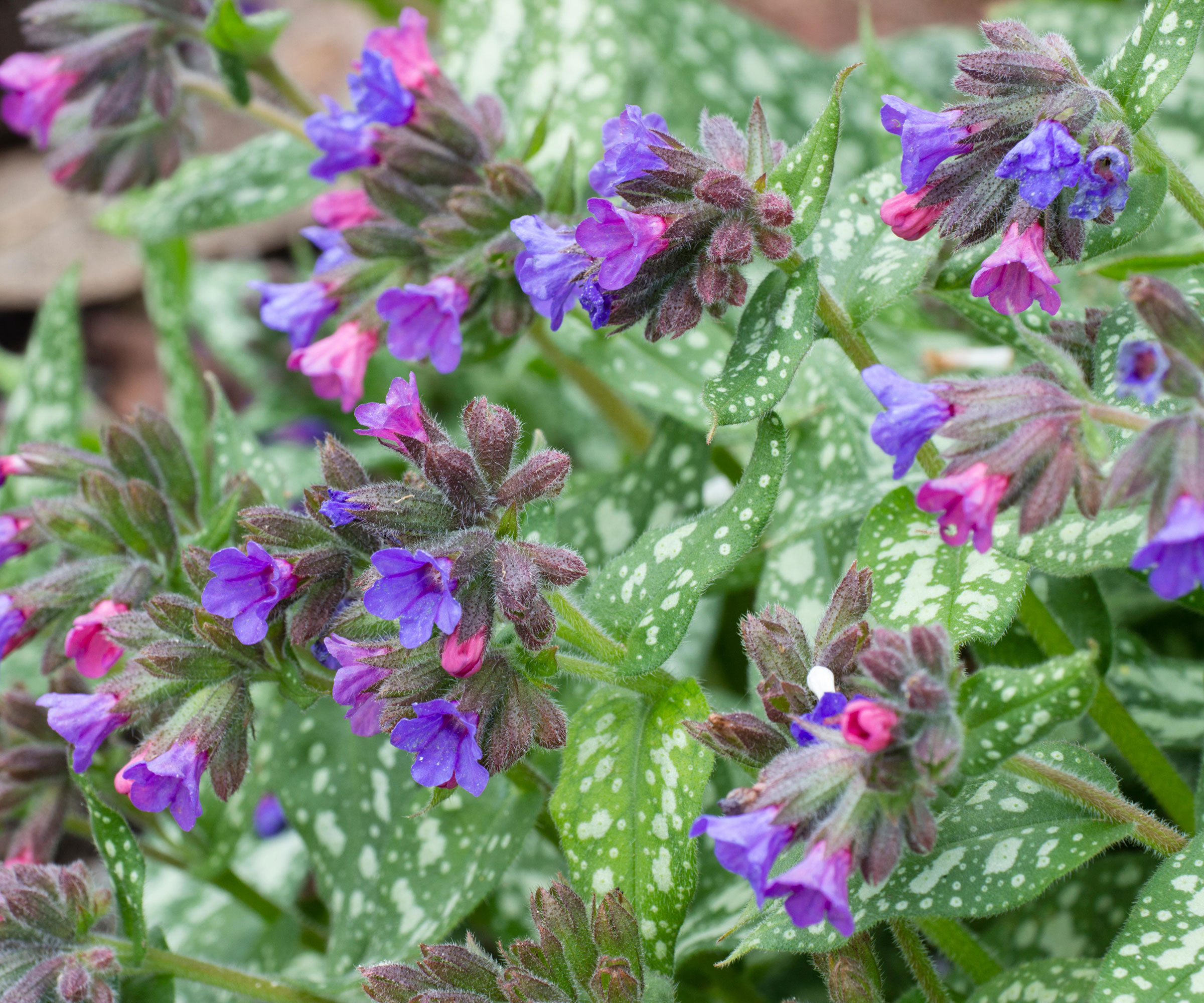
How to grow lungwort
Lungwort is a woodland plant in the Boriginaceae family native to Europe and Asia. It grows rosettes of attractive leaves with white or silver speckles, topped with spring flowers that can be blue, pink, white, or red and hang on upright stems. Historically, lungwort was used to treat lung infections—hence its name—but it is now grown as a popular low-maintenance ground cover plant.
Growing habits of lungwort
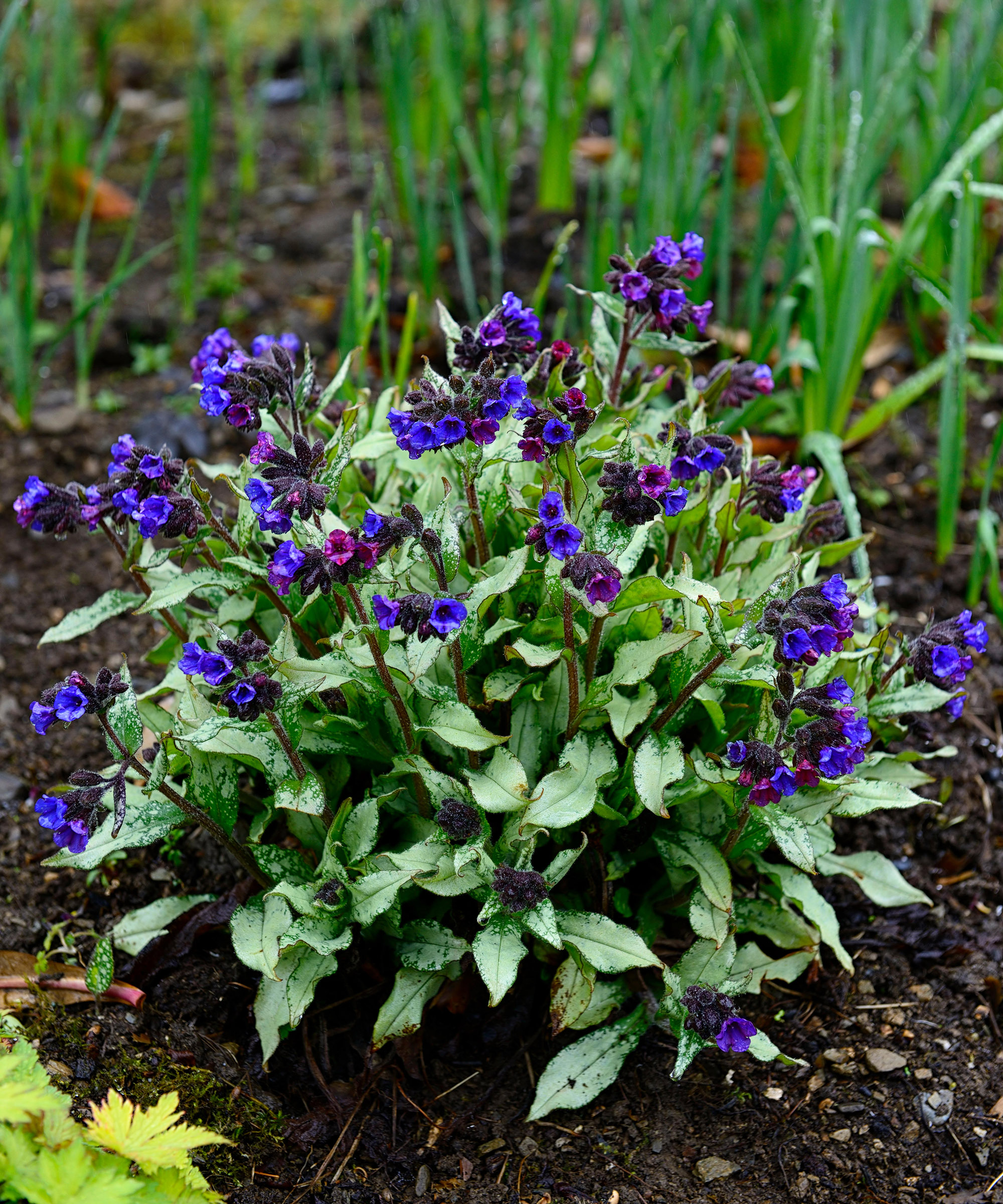
Lungwort is a clump-forming low-growing perennial plant, often reaching no more than 12-18 inches tall and wide. It offers a wealth of interest, such as the small, delicate bell-like flowers that impress through spring and summer and the attractive and unusual speckled leaves, that make lungwort an attractive ground cover plant.
‘Lungwort is a hardy flowering ground cover that I have grown in many gardens across the UK,’ says Thom Rutter, a former professional gardener and content editor at Homes & Gardens. ‘Valued for its cold tolerance, most Pulmonaria spp. can be grown down to US hardiness zone 3, making it an ideal pick for those who reside in cooler, northerly regions.’
Lungwort can be added to flower beds and borders as specimen plants or, as mentioned earlier, used as ground cover plants to add a splash of color to trickier shadier spots in the backyard. You can also grow lungwort in pots as part of a container garden.

Thomas is a Content Editor within the Gardens Team at Homes and Gardens. He has been working as a gardener and garden writer for several years. Whilst completing his Horticultural Traineeship at the Garden Museum, London, he was able to gain experience at many of the UK's world-famous gardens, including Sissinghurst, Lowther Castle, and Iford Manor. Following this, he worked for two private estates in Tuscany, Italy.
How to grow and care for lungwort
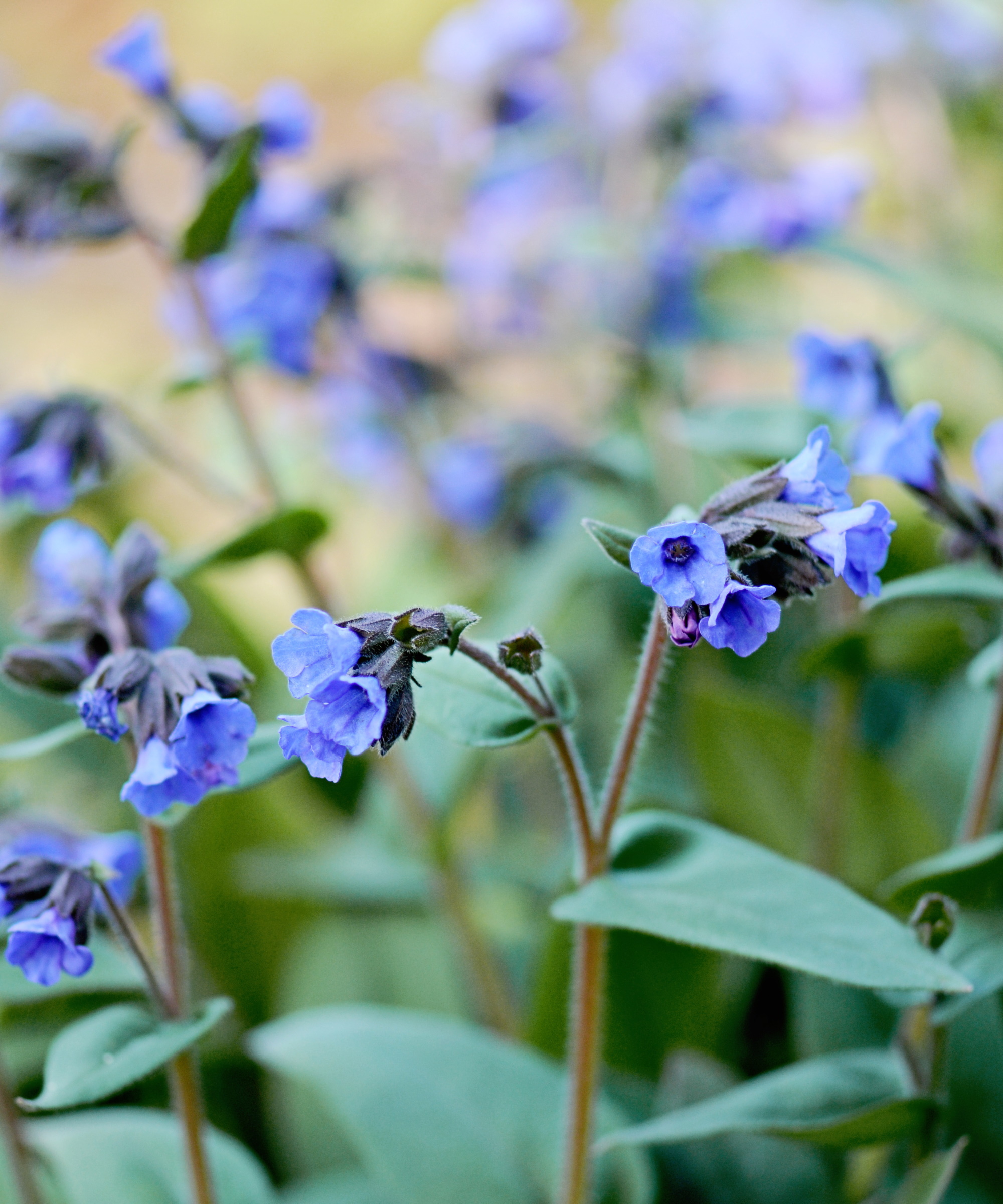
- Soil - Lungwort will thrive planted in rich, moist, and well-draining soil. It likes lots of organic matter and a soil pH of 7-8. Drainage is vital and you may need to amend heavier soil types as lungwort does not like wet soil. Rachel Bull, head of gardens at Homes & Gardens, says that plants suffer from root rot from sitting in sodden soil for too long. ‘Lungwort will always struggle with poor drainage and wet ground,’ warns Rachel. ‘To avoid this, add lots of organic matter, ideally compost, before planting. This will improve the soil structure, enhance drainage, and offer vital nutrients to the plants’.
- Light - Lungwort is a great shade plant, it actively prefers growing in part-shade to full-shade spots. It can grow in the sun but prefers to be sheltered from the afternoon rays. Too much sun can scorch the leaves and cause plants to dry out. Lungwort’s preference for shadier spots makes it suitable for what can be trickier spots to plant. As Thom Rutter says: ‘If you are looking for a shade-tolerant ground cover plant, to either line a path or grow under an established shrub or tree, lungwort could be a good option for you.’
- Watering - Lungwort prefers consistently moist soil, however, when established they are relatively drought-tolerant perennials - though flowering may be affected by a lack of moisture. It is better to keep a close eye on when to water plants and give them a deep watering during dry spells. Water when the soil is dry, use your fingers or a soil moisture meter, available at Amazon, to check the levels a few inches under the surface, and avoid overwatering plants as they will not like sitting in overly wet soil for long periods.
- Fertilizing - Lungwort does not need lots of fertilizer, especially if you have fertile soil. Thom Rutter highlights the best way to feed lungwort each year, he says: ‘Be sure to condition the soil with mulch every year, as these plants prefer moderately fertile and moist earth to thrive.’ If you have poor soil and want to give extra nutrients to plants, you can give them a light application of balanced fertilizer in spring, such as this 10-10-10 all-purpose fertilizer at Amazon.
- Pruning - Simply remove flower stalks once the lungwort has finished flowering. This keeps the plant looking its best and allows new growth to show through. Remove any old and damaged leaves as required throughout the season.
- Toxicity - Lungwort is not toxic to humans but the leaves, stems, and blooms are toxic to cats and dogs.

Rachel is a gardening writer, flower grower and floral designer. Her journalism career began 15 years ago on Country Living magazine, sparking a love of container gardening and wild planting. After more than a decade writing for and editing a range of consumer, business and special interest titles, Rachel became editor of floral art magazine The Flower Arranger. She then trained and worked as a floral designer and stylist in London before joining the H&G team.
FAQs
Can you grow lungwort from seed?
Most lungwort cultivars are hybrids and will not replicate their parent plants when grown from seed. Although lungwort may self-seed around the yard, it might not replicate the parent plant. Therefore, the best way to grow more lungwort is to divide plants in fall or spring. Dig up a clump and divide it into sections with a sharp knife that can be replanted directly into a new spot.
Can I grow lungwort in a pot?
Lungwort can be grown in containers in shady spots but will need more watering and feeding than plants grown in the ground. Plant in a fertile and well-draining potting mix and feed lungwort in pots with a second dose of balanced fertilizer in summer, on top of the initial feed in spring. Regularly check to water plants in containers and keep the soil consistently moist.
Is lungwort invasive?
Lungwort will gradually spread, but it is not invasive. They are slow-growing ground cover plants and not regarded as rampant spreaders.
Lungwort is just one of many fantastic ground cover plants that can cover areas of the garden that may otherwise be bare. It is never advised to have bare soil, it looks unappealing, is detrimental to soil health, and can result in weeds taking over an area. Why not use evergreen ground cover plants to make the area look nicer, prevent weeds, and offer food to pollinators and beneficial insects?
Design expertise in your inbox – from inspiring decorating ideas and beautiful celebrity homes to practical gardening advice and shopping round-ups.

Drew’s passion for gardening started with growing vegetables and salad in raised beds in a small urban terrace garden. He has worked as a professional gardener in historic gardens and specialises in growing vegetables, fruit, herbs, and cut flowers as a kitchen gardener. That passion for growing extends to being an allotmenteer, garden blogger, and producing how-to gardening guides for websites. Drew was shortlisted for the New Talent of the Year award at the 2023 Garden Media Guild Awards.

